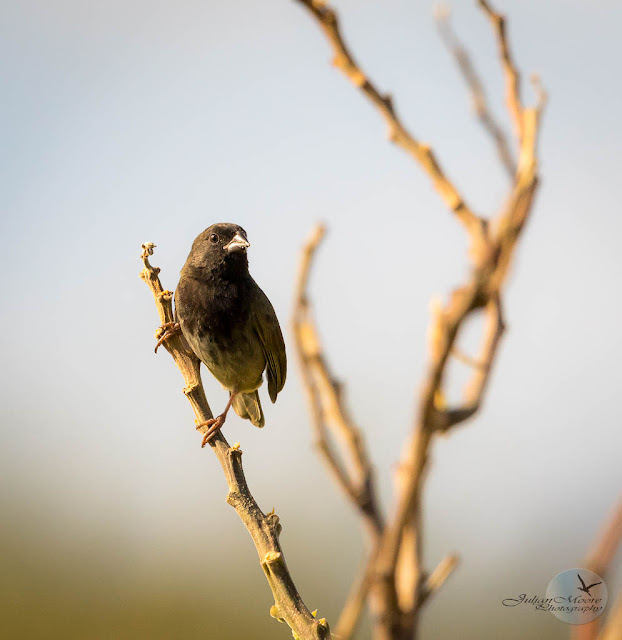 |
| Black-whiskered Vireo |
It is one of the most challenging birds to find, even when it is calling. However, at a certain time of the year and near a specific tree, you can witness them in all their glory. The bird I am referring to is the Black-whiskered Vireo (Vireo altiloquus), and the tree is locally known as the Tourist Tree or Turpentine Tree (Bursera simaruba).
 |
| the fruit of the Tourist Tree attracts the birds |
The name “Tourist Tree” comes from the fact that the tree’s bark is red and peeling, resembling the sunburned skin of a tourist. On the other hand, the name “Turpentine Tree” is due to the strong turpentine-like smell of the tree’s resin. |
| Black-whiskered Vireo with a faded mustache lines can pass for a Red-eyed Vireo |
Every year around this time, the tree sheds its leaves and produces small red berries, which are beloved by several bird species, including the elusive Black-whiskered Vireo.
 |
| Barbados Bullfinches were chasing off the other birds |
During my recent visit to a location with three of these trees, I noticed an unusual lack of activity. Normally, when this tree is fruiting, it’s bustling with bird activity. However, each tree had only one Barbados Bullfinch (Loxigilla barbadensis). It became clear that the Bullfinches were chasing away other birds, explaining the lack of activity.
 |
| Caribbean Elaenia was one of the bird species at the Tourist Tree |
Soon enough, I spotted the first Vireo and also observed a Caribbean Elaenia (Elaenia martinica). My initial excitement was tempered when I thought I saw a Red-eyed Vireo (Vireo olivaceus), a bird I had yet to see on the island. Upon closer examination, it turned out to be a black-whiskered Vireo, likely a juvenile.
I plan to revisit the trees again during this brief fruiting period, hopefully, the Bullfinches will be more accommodating to the other bird species visiting the Tourist Tree.






















































